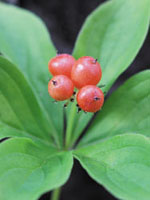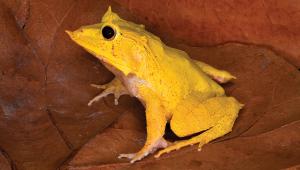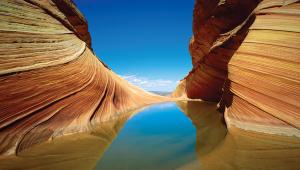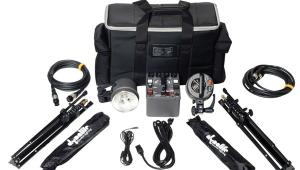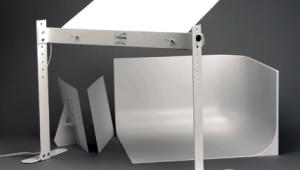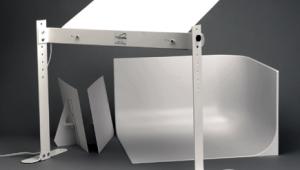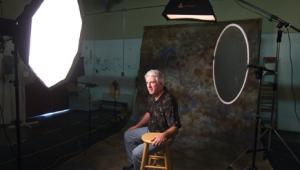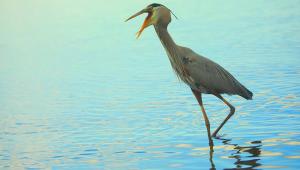Lesson Of The Month
Creating Digital Macro Shots On Location
Recently, my wife and I undertook
a long day hike through an old growth forest trail in Oregon, where
we came across enormous redwood trees and beautiful plant life. I had
planned on taking some pictures that day, but I didn't want to
lug a lot of heavy camera and lighting equipment with me. This lesson
demonstrates how you can hike with photo and lighting gear without breaking
your back. As you can see from the
result, the exposure is good and the shot clearly depicts the plant,
but it's fairly uninteresting overall and the background is somewhat
distracting. |
||||
When shooting a macro shot,
it is often best to use a tripod so that you can position the camera
and focal distance precisely where you want it. I set up a very lightweight
Gitzo carbon-fiber tripod with a lightweight Manfrotto ball head, attached
the camera, and set it in the vertical position. Even in this sideways
position, the tripod was very stable. The macro lens had allowed me to come in much tighter on the berries and have every element of the shot be in focus. However, reviewing the shot in the LCD of the camera, I noticed that the background was still a little distracting. So I decided to draw the attention more toward the berries by throwing the background out of focus. |
||||
In order to throw the background
out of focus, I needed to limit the depth of field by enlarging the
aperture. So, I opened the aperture all the way up to f/2.4, set the
shutter speed to 1/400 sec to compensate for exposure and took another
shot (#5). |
||||
At this point, I could have
stopped and had a great macro shot, but to illustrate further, I decided
to bounce some sunlight in to give the berries some specular highlights,
similar to the ones the direct sun previously gave. The advantage in
this setup over the direct sun shot, however, would be that we wouldn't
have the distractingly hard shadow of the berries. |
||||
This lesson will be posted in the free public section of the Web Photo School at: www.webphotoschool.com. You will be able to enlarge the photos from thumbnails. If you would like to continue your digital step by step education lessons on editing, printing, and e-mailing your photos it will be on the private section of the Web Photo School. To enroll for WPS just go to www.shutterbug.net and click on WPS Free Lessons. Technical Equipment |







